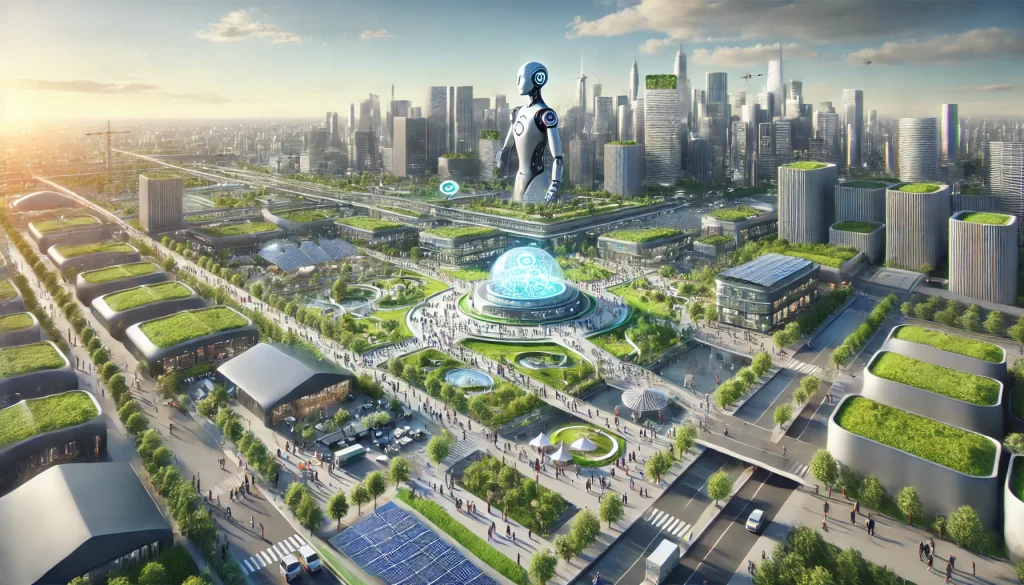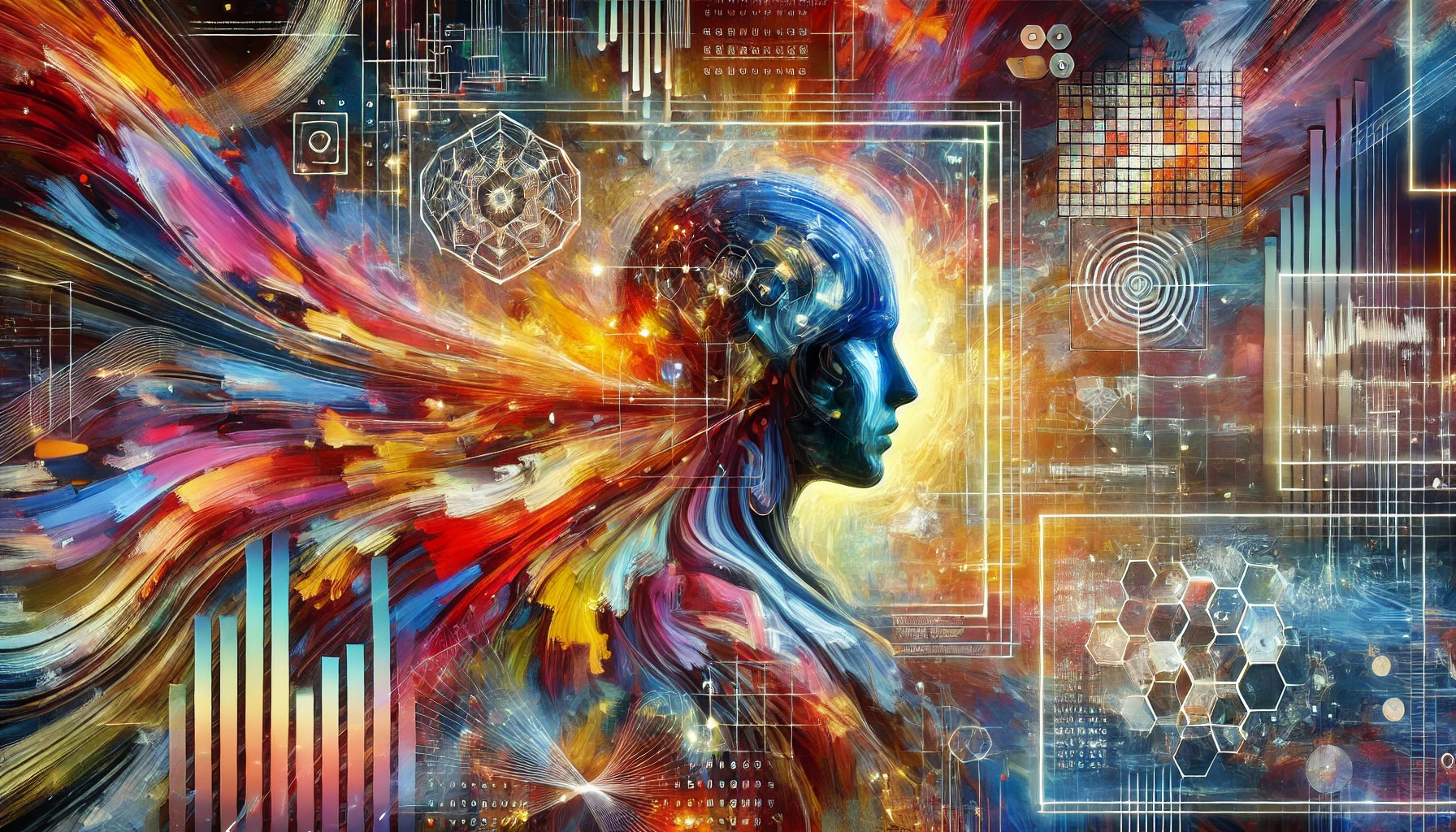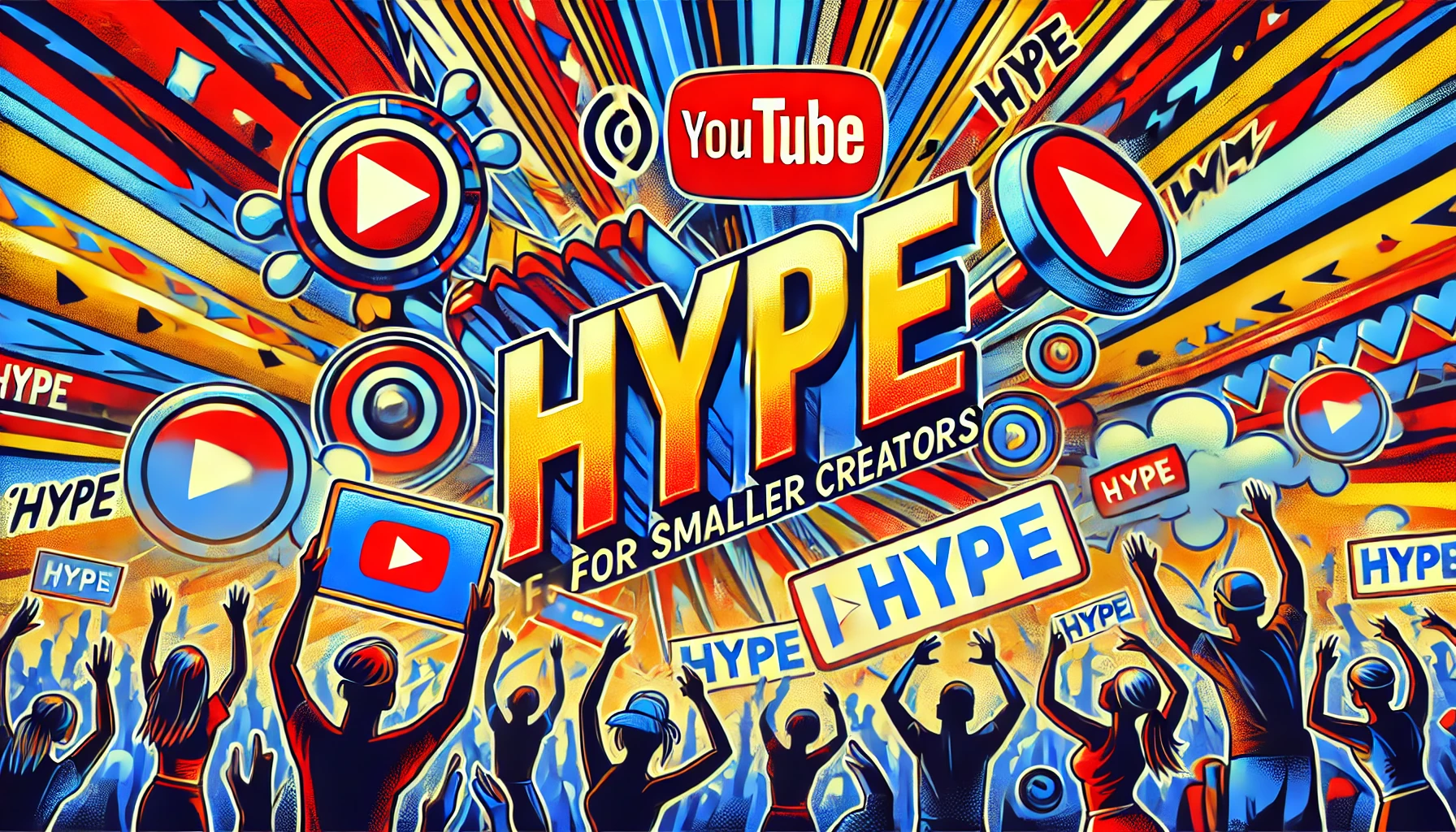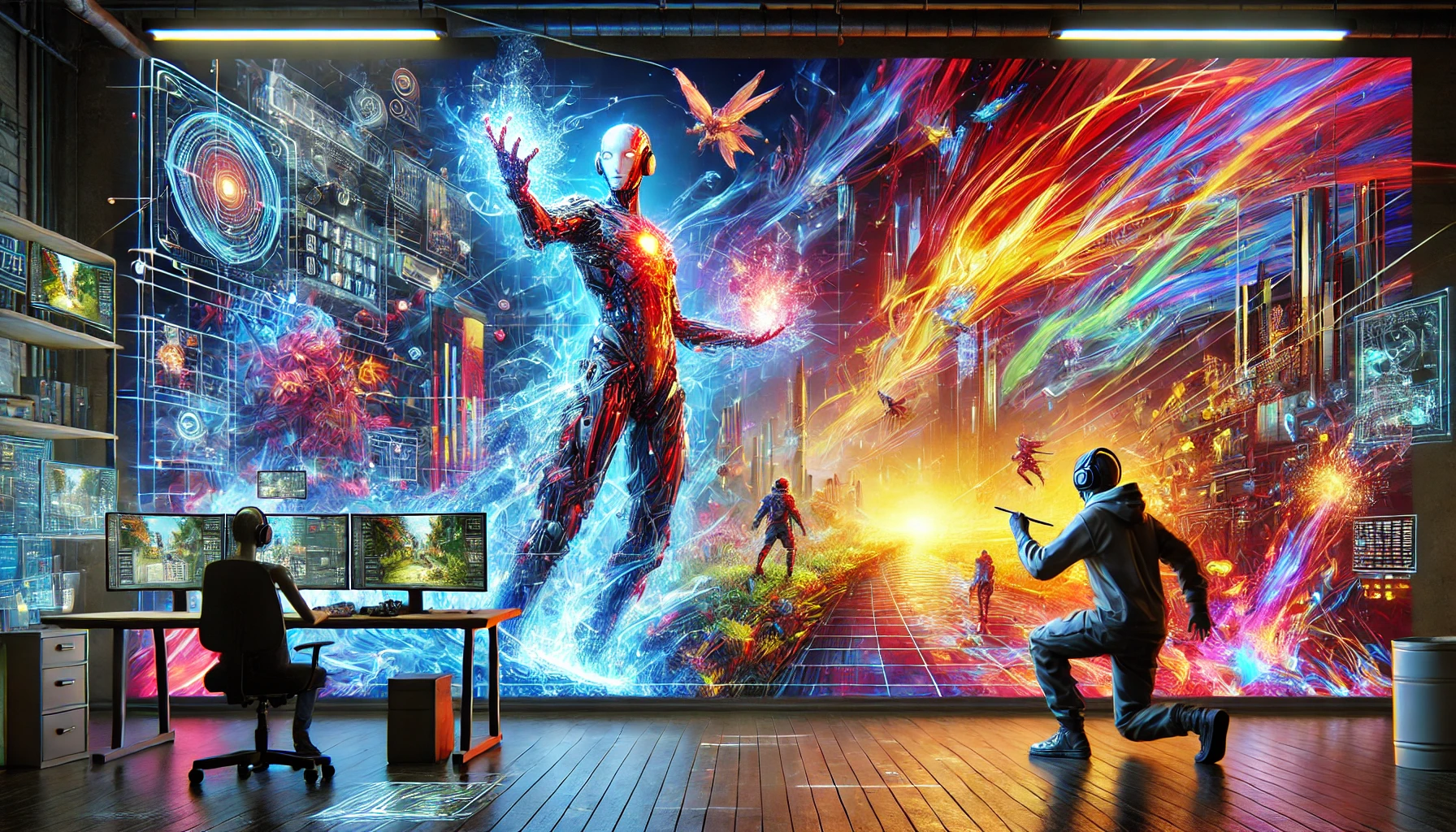Executive Summary
As we stand on the brink of Artificial General Intelligence (AGI), society faces an unprecedented challenge: what happens when machines can perform the vast majority of jobs faster, cheaper, and better than humans? Universal Basic Income (UBI) has been proposed as a stopgap to address mass unemployment, but it is insufficient to meet the broader sociological, economic, and psychological shifts that AGI will bring.
This report delves into alternative models to UBI, applying both creative sociological thinking and pragmatic economic analysis to imagine what the future of human roles, economic systems, and societal structures could look like when three-quarters of labor is handled by AGI and robotics.
Introduction: The New Economic Frontier
AGI, once the domain of science fiction, is rapidly approaching reality. With the potential to replace the vast majority of human labor, AGI challenges the foundations of our economic systems. Unlike current AI, which is task-specific, AGI will be capable of handling cognitive tasks across multiple domains, performing jobs that once required extensive human training. This transformation necessitates a rethinking of economic security models.
Universal Basic Income (UBI) offers an appealingly simple solution—giving everyone a basic income to cover their needs. However, UBI may only be a temporary patch, not a long-term fix, in a world where humans need to find purpose, value, and meaning in their contributions.
This report introduces three forward-looking models that go beyond UBI to create a sustainable, equitable, and meaningful economic future.
1. Universal Contribution and Participation (UCP) Model: Purpose Beyond Currency
In the AGI future, income alone won’t be enough. Humans will need a sense of purpose, a reason to engage with society beyond mere survival. The Universal Contribution and Participation (UCP) model focuses on shifting from income to social value, encouraging citizens to actively participate in building communities and fostering innovation. This model redefines “work” as not just employment but any socially or environmentally beneficial contribution.
Analogy: The Civic Contribution Economy
Imagine an economy where, instead of monetary exchange, people earn social credits based on their contributions. Picture this: a software developer spends their morning improving an open-source platform used by local schools. In return, they earn credits that they can use to access resources, such as energy or community-shared transport. Meanwhile, a retired professional dedicates their time to mentoring young entrepreneurs in the neighborhood, earning social credits for their guidance. These credits can be exchanged for services like healthcare or entertainment.
In this system, no one is left without a role. From child-rearing to urban gardening to art installations that bring people together, everything is seen as contributing to the social good, and everyone is rewarded for their participation.
Scenario 1: The Community Architect
Let’s say we’re in 2045, where AGI manages most traditional jobs. Maria, a former financial analyst, now spends her days designing community spaces that promote collaboration and well-being. Using her UCP social credits, she is able to access resources like food, housing, and leisure activities, all while contributing to her community. Maria's role has shifted from earning income through spreadsheets to reshaping how her neighborhood connects and thrives.
Real-World Analogies
Think of this like the combination of the Time Banking concept and volunteer-driven organizations like the Peace Corps. In a UCP economy, every activity that strengthens society—from cleaning parks to tutoring students—is compensated in non-monetary but equally valuable ways.
Scenario 2: The Green Ambassador Program
In 2055, environmental sustainability becomes a central focus of global society. Under the UCP model, a "Green Ambassador Program" is launched, where citizens earn social credits by participating in environmental restoration projects.
-
Example: Alex, a former factory worker, now spends his days leading a team that reforests degraded land in his community. Equipped with AGI-powered drones that plant and monitor trees, Alex's team restores ecosystems more efficiently than ever before. Alex earns social credits for his contributions, which he uses to access services like healthcare and education for his children. His role as a Green Ambassador not only secures his livelihood but also gives him a deep sense of purpose as he actively contributes to combating climate change.
-
Bottom Line: This scenario highlights how UCP allows individuals to transition from traditional jobs to roles that benefit society and the environment, with AGI enabling more impactful contributions.
Scenario 3: The Community Educator Role
By 2060, education has been transformed into a lifelong, community-driven endeavor. The UCP model includes a "Community Educator" role, where citizens contribute by sharing knowledge and skills in local learning hubs.
-
Example: Priya, who once worked as a schoolteacher, now facilitates workshops on AI ethics at her local learning hub. Her sessions, attended by people of all ages, help citizens understand and navigate the ethical implications of living alongside AGI. Priya's role is crucial in fostering an informed society, and she earns social credits that allow her to access cultural events and travel opportunities. The AGI system supports her by providing the latest research and learning materials, making her workshops both up-to-date and engaging.
-
Bottom Line: This scenario shows how UCP can repurpose existing skills for community enrichment, with AGI providing the tools to enhance educational outcomes and participation.

2. Resource-Based Economy (RBE): A World Without Money
What if money itself became obsolete? In a Resource-Based Economy (RBE), AGI and robotics manage all production and distribution of resources, ensuring that everyone has access to the essentials of life without the need for financial transactions. The focus shifts from ownership and wealth accumulation to equitable access to resources. This idea may seem radical, but if machines do all the work, why should we cling to a monetary economy designed around human labor?
Analogy: A Hyper-Efficient City
Imagine a future city that operates like a highly automated version of a modern-day farm-to-table restaurant—only the “restaurant” is the entire society, and it produces not just food but everything you need to live. AGI optimizes the production of food, energy, and consumer goods based on real-time demand, ensuring that resources are allocated with minimal waste. You don’t “buy” a new pair of shoes—you simply request them, and they’re produced on demand using recycled materials, automatically delivered by drones.
Scenario 1: The Automated Suburban Village
Picture life in a suburban village in 2050. Autonomous vehicles, powered by renewable energy, shuttle residents wherever they need to go. AGI-managed vertical farms provide fresh food to local distribution hubs, where residents can pick up their provisions. There’s no grocery bill because the system has optimized production and distribution to meet everyone’s needs efficiently. Meanwhile, citizens focus on innovation, creativity, or communal activities, as all basic needs are guaranteed by the resource management system.
Real-World Precedents
The concept of an RBE is not entirely without precedent. The Venus Project, founded by futurist Jacque Fresco, has advocated for a world where resource management is based on technological abundance rather than monetary systems. In our AGI future, this could finally become a reality, with AGI systems ensuring resources are distributed equitably based on need, not wealth.
Scenario 2: The Autonomous Health System
By 2070, healthcare is entirely managed by an AGI-driven resource allocation system. In the RBE, medical resources—including personnel, equipment, and medicines—are distributed based on real-time data rather than financial considerations.
-
Example: When Jane, a resident of a small rural town, experiences chest pain, an AGI-powered system immediately deploys a mobile health unit to her location. The unit, staffed by robots and telepresence doctors, diagnoses her with a mild heart condition and provides immediate treatment. The system ensures that Jane receives the same quality of care as someone in a major city, with no cost involved. The RBE model guarantees that healthcare resources are efficiently allocated based on need, not wealth.
-
Bottom Line: This scenario illustrates how an RBE could eliminate healthcare disparities by using AGI to ensure equitable access to medical resources, regardless of location or socioeconomic status.
Scenario 3: The Sustainable City Infrastructure
In 2080, cities operate as closed-loop systems, where resources are continually recycled and reused. The RBE model is integral to managing these resources, from water and energy to waste.
-
Example: In the city of New Horizon, all buildings are designed with integrated systems that recycle water, generate energy from solar panels, and compost organic waste on-site. AGI systems monitor and optimize these processes, ensuring that no resources are wasted. Residents live in harmony with their environment, contributing to maintenance and innovation in their local resource cycles. When new materials are needed, they are produced on-demand using local, recycled inputs, reducing the city's reliance on external resources.
-
Bottom Line: This scenario demonstrates how an RBE could lead to the creation of self-sustaining cities, where resources are managed in a way that minimizes environmental impact and enhances quality of life.

3. Collaborative Innovation Ecosystem (CIE): The Economy of Ideas
If machines can handle routine tasks, what’s left for humans to do? The Collaborative Innovation Ecosystem (CIE) model envisions a future where the economy is driven by human creativity, problem-solving, and innovation, with AGI acting as an enabler rather than a replacement. In this scenario, humans work in partnership with AGI systems to push the boundaries of science, technology, the arts, and social systems.
Analogy: The Research Lab for Everyone
Think of a massive, decentralized research lab that anyone can join. Citizens don’t need to be specialists to contribute; instead, AGI systems guide them through complex projects. For instance, an artist and a chemist might work together on new materials for sustainable clothing, with AGI providing data on environmental impact and material durability. In return, they receive access to further research resources, community support, and recognition.
Scenario 1: The Citizen Scientist
Take the case of Alok, a citizen scientist in 2060. He’s collaborating on a global project to develop AI-powered healthcare solutions that can diagnose rare diseases. Alok’s background is in teaching, but the CIE has enabled him to contribute by working alongside AGI-powered research tools. His insights into human communication have helped fine-tune the user interface for a diagnostic tool that AGI handles behind the scenes. The AGI does the technical heavy lifting, but Alok’s creative and social skills add the necessary human touch.
Real-World Precedents
We can already see early signs of this model in projects like Foldit, where gamers solve real scientific problems, or platforms like Kaggle, where data scientists collaborate on challenges. In the CIE future, everyone—regardless of their formal education or training—can contribute to innovation through guided collaboration with AGI.
Scenario 2: The Global Climate Innovation Network
By 2065, climate change remains a critical challenge. The CIE model fosters a global network of innovators focused on developing AGI-assisted solutions to mitigate environmental impacts.
-
Example: Li, a biologist in China, collaborates with scientists in Brazil and software engineers in the United States to develop AI-driven techniques for coral reef restoration. Using AGI to simulate different environmental conditions, the team creates genetically modified corals that are more resilient to warming oceans. The CIE model provides Li and her team with access to global research databases, advanced labs, and the ability to test their innovations in multiple ecosystems. Their work is shared globally, with other teams building upon their success to address local environmental challenges.
-
Bottom Line: This scenario highlights how the CIE can enable global collaboration, leveraging AGI to solve complex, transnational problems like climate change, with the results benefiting all of humanity.
Scenario 3: The Cultural Renaissance Movement
By 2075, a cultural renaissance is sweeping the globe, driven by human creativity and AI collaboration. The CIE model encourages citizens to explore and innovate in the arts, leading to an explosion of new cultural expressions.
-
Example: Maya, an artist from Nairobi, uses AGI tools to create immersive virtual reality experiences that blend traditional African art with futuristic themes. Her work gains international acclaim, as it allows users to explore and interact with these cultural narratives in unprecedented ways. The CIE model supports Maya by providing access to cutting-edge technology, global distribution platforms, and cross-disciplinary collaborations with other artists, historians, and technologists. Her projects spark a global dialogue on the preservation and evolution of cultural heritage in the digital age.
-
Bottom Line: This scenario illustrates how the CIE can empower individuals to lead a cultural renaissance, using AGI to push the boundaries of artistic expression and cultural preservation.

What Happens to Jobs in an AGI World?
In this AGI-driven future, traditional jobs as we know them will largely disappear. Instead of focusing on employment, society will need to redefine the concept of "work" itself. Humans will engage in activities that bring purpose, fulfillment, and contribution, rather than tasks that simply sustain the economy. These could include:
- Curating Human Experience: Developing new art forms, cultural experiences, and social technologies that shape the future of human interaction.
- Collaborating with AI: Working alongside AGI systems to solve global challenges, from climate change to space exploration.
- Building Communities: Creating stronger, more resilient communities focused on well-being, education, and sustainability.
- Exploring Creativity: Leveraging human creativity to innovate in ways that AGI can’t, such as storytelling, arts, and ethical leadership.
Conclusion: Building a Future Beyond UBI
The transition to an AGI-driven economy will require not just technological innovation but a rethinking of our fundamental social and economic structures. UBI offers a temporary solution but does not address the deeper issues of human purpose, inequality, and long-term sustainability. By exploring models like Universal Contribution and Participation, Resource-Based Economies, and Collaborative Innovation Ecosystems, we can create a future where AGI enhances human potential rather than diminishing it.
The challenge for policymakers, economists, and technologists is to begin planning now for this future, engaging in thought experiments, pilot programs, and policy development to ensure that society remains equitable, purposeful, and resilient in the face of AGI.




















Post Comment
You must be logged in to post a comment.